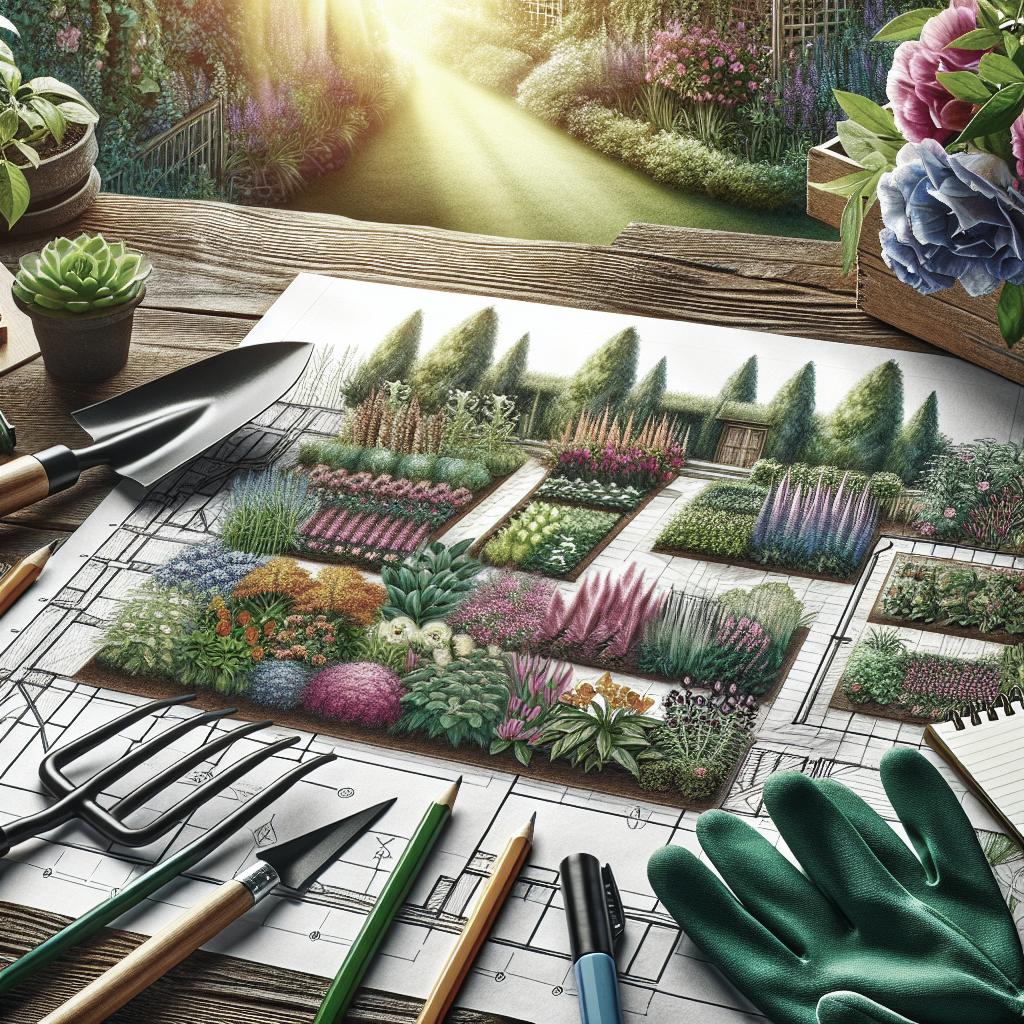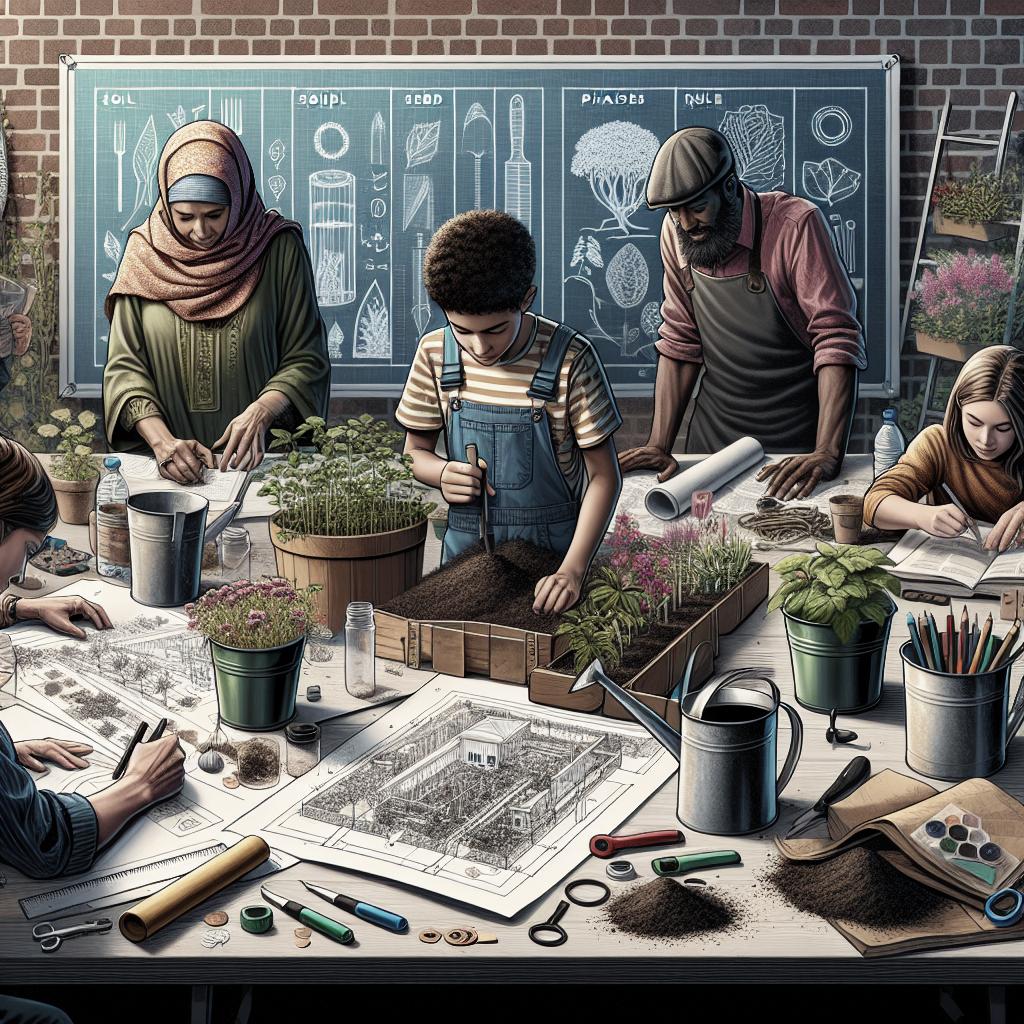“`html
Transforming a simple backyard into a themed garden plot is a fulfilling and rewarding endeavor. Whether you’re a seasoned gardener or a newbie with a green thumb, planning is crucial. This blog post will guide you through the steps needed to create a cohesive and aesthetic garden design. We’ll cover the benefits, how to assess your space, the importance of pre-planning, and the necessity of drafting your garden layout. You’ll also get insider tips on how to effectively deal with space constraints and maximize the potential of your garden plot. Get ready to turn your garden dreams into a blossoming reality!
What Are the Benefits of a Vegetable Garden Layout?
A well-thought-out vegetable garden layout not only maximizes your space but also maximizes the yield you can get from your efforts. By planning your garden, you can strategically place plants that complement each other, ensuring that every square inch of your garden serves a purpose. This strategic placement leads to healthier plants and a more efficient garden.
Additionally, planning your garden can lead to significant savings on grocery bills. Homegrown vegetables often taste better and are free from harmful pesticides. On a larger scale, maintaining your garden allows you to contribute to sustainability efforts by reducing your carbon footprint, providing fresh produce locally, and possibly even composting organic waste.
Step 1: Consider the Space You’re Working With
The first step in planning your themed garden plot involves assessing the space you have available. Look at the shape of your garden and its sun exposure. Note any natural features like trees, rocks, or existing structures that could impact your design. Make sure to measure the area to get accurate dimensions, which will help in the drawing and pre-planning stages.
Space constraints often require creativity. If you have a small yard, vertical gardens or container gardening can maximize your use of available land. Conversely, larger spaces give you more freedom to create meandering paths or segmented areas focusing on different themes, whether it’s a herb garden, a vegetable plot, or a decorative flower section.
Step 2: Do Some Pre-Planning
Before you dive into planting, you’ll need to make some decisions about what you want in your garden. Will it be purely functional with vegetables and herbs, or are you also looking to add aesthetic elements like flower beds and water features? Knowing what you want will help you make more informed decisions when you start drawing out your plan.
It’s also important to research the plants you’re interested in growing. Determine their water and sunlight needs and compatibility with each other. Some plants are natural companions and promote each other’s growth, while others can compete for resources and stunt each other’s development. Taking time to research will save you a lot of trouble down the road.
Step 3: Draw it Out
Armed with your measurements and research, it’s time to create a physical layout for your garden. Start with a basic sketch on graph paper, indicating where each plant will go considering their size, growth patterns, and sunlight requirements. Utilize online garden planning tools for more accurate representations and planting schedules.
A drawn-out plan doesn’t only guide your planting process; it allows you to visualize the final outcome. Add color and details to your drawing to better conceptualize how each element of your garden will come together. Seeing everything on paper can also help you identify potential issues before you start digging.
HGTV your inbox.
Subscribe to receive daily project inspiration, expert advice, and top home improvement stories, curated just for you. Stay informed and inspired as you work on making your home and garden the envy of your neighborhood.
Most Popular
Get insights into trending home and garden tips. From seasonal garden maintenance to trendy DIY projects, discover what’s capturing the attention of gardening enthusiasts everywhere.
Latest News
Stay updated with the latest in gardening, home improvement, and landscaping. From new plant species to revolutionary gardening tools, keep your garden ahead of the curve with the newest industry developments.
Beer Budget Reno is Now Casting in the Greater Toronto Area
Exciting news for Toronto residents! Beer Budget Reno is looking for individuals ready to transform their homes on a budget. Showcase your home renovation skills and get a chance to be featured.
5 Ways to Infuse Your Personal Style into Home Design
Learn how to blend your personality with your living spaces using unique design elements. Embrace creativity and make your home a true reflection of yourself.
5 Furniture Deals That Are Better at IKEA Than Costco
Discover where to find the best bargains on essential furniture pieces. Compare IKEA’s vast selection and affordability with Costco’s quality and pricing, and make informed shopping choices.
How to Properly Clean Your Air Conditioner Before Summer’s Over
Prepare your home for the changing seasons by ensuring your AC unit is in top shape. Follow our step-by-step guide to maintaining and cleaning your air conditioner.
Nicole and Caffery Design an Ultra-Moody Basement Speakeasy
Experience a journey through vintage-inspired design and creativity as Nicole and Caffery transform an ordinary basement into a chic, moody speakeasy.
Embrace the French Farmhouse Decor Trend With These Top Picks
Add a touch of rustic elegance to your home with French farmhouse decor. Discover top picks that will bring charm and sophistication to any room.
5 Non-Traditional Ways to Buy a Home in 2024
Explore innovative methods for purchasing property. From crowdfunding to lease options, find out how you can own a home through unconventional means.
How to Get Rid of Dust From Every Type of Surface at Home
Keep your home spotless by learning effective dusting techniques for various surfaces. Ensure a cleaner, healthier living environment with our expert tips.
These Custom Floating Shelves Can Be Made in 7 Easy Steps
Add stylish and functional storage to your home with DIY floating shelves. Follow our simple seven-step guide to create custom shelving that suits your space perfectly.
| Steps | Description |
|---|---|
| Consider the Space You’re Working With | Assess the shape, size, and natural features of your garden plot. Measure the area to have precise dimensions for planning. |
| Do Some Pre-Planning | Decide on the type of garden. Research plants to ensure they will thrive together and meet their sunlight and water needs. |
| Draw it Out | Sketch your garden layout on graph paper or use online tools. Create a visual plan to foresee the final design and identify potential issues. |
“`


